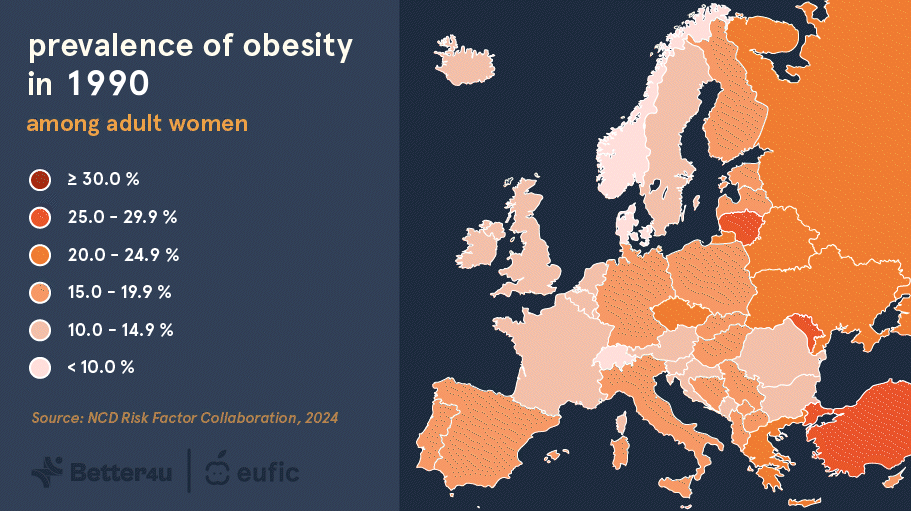Obesity is a complex, multifactorial condition characterised by the abnormal or excessive accumulation of body fat, which poses significant health risks. It is widely recognised as a major public health issue and a leading cause of death and disability. As a key risk factor, obesity contributes to the development of various non-communicable diseases, including cardiovascular diseases, type 2 diabetes, hypertension, coronary heart disease, and certain cancers. The Body Mass Index (BMI) scale is commonly used to screen for obesity and, when combined with other factors, helps diagnose the condition.
Better4U partner, The European Food Information Council has written an article on “Europe’s obesity statistics: figures, trends & rates by country” providing insights into the prevalence and trends of overweight and obesity, exploring their driving factors, health impacts, and the associated healthcare costs.
📢 Read the full article on EUFIC’s website here.

Fig. 1 – Obesity rates by country among men between 1990-2022 in Europe.2

Fig. 2 – Obesity rates by country among women between 1990-2022 in Europe.2
